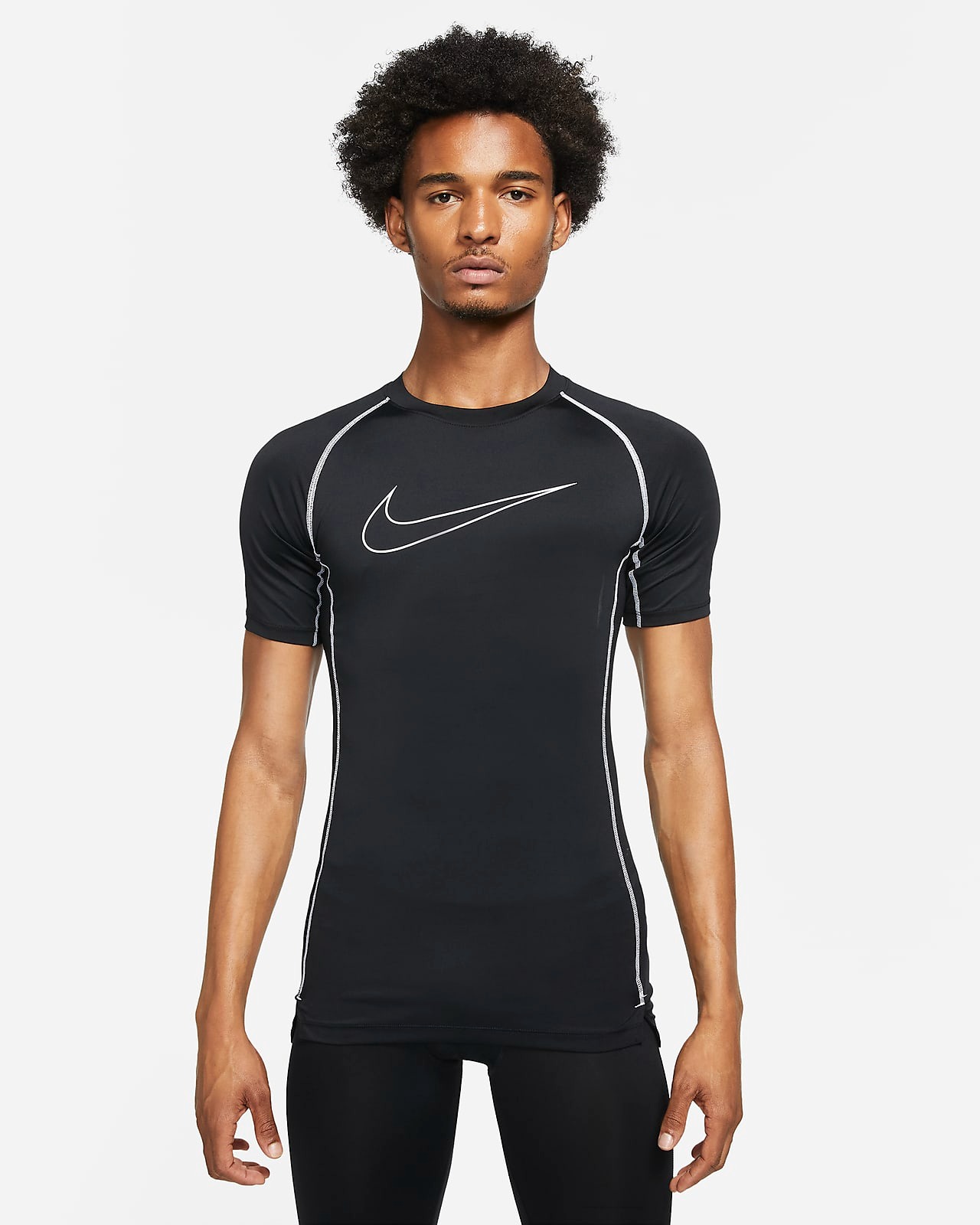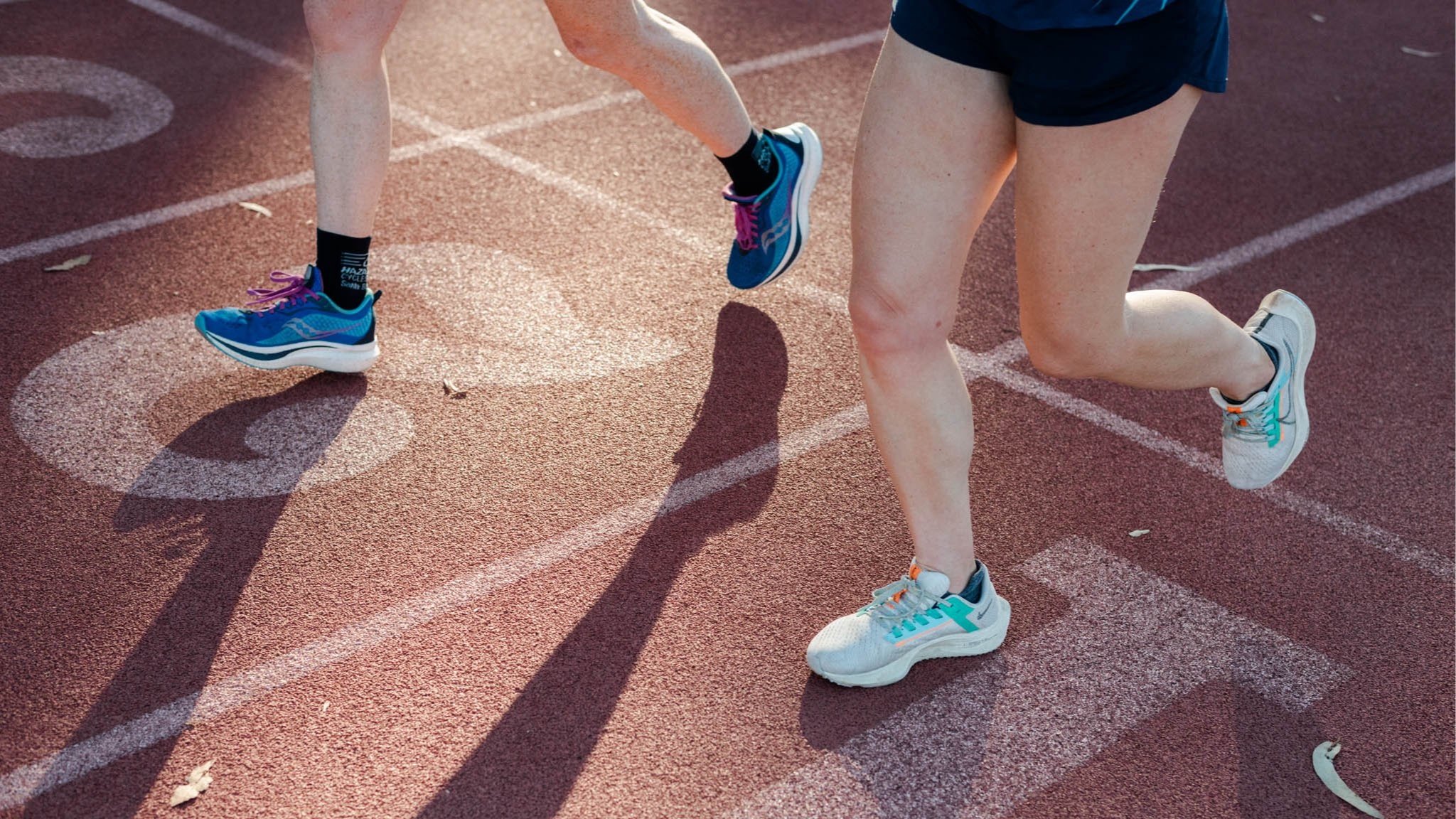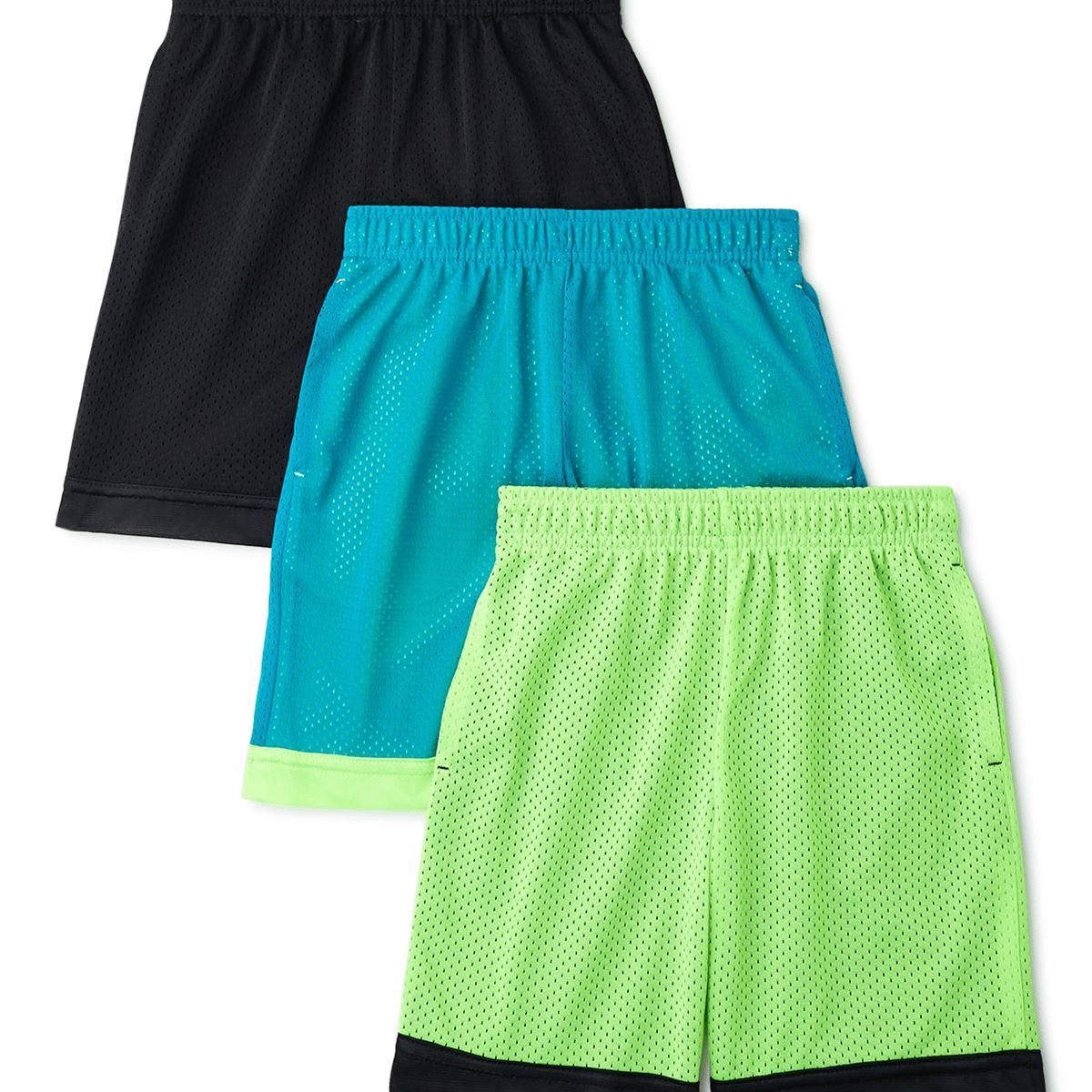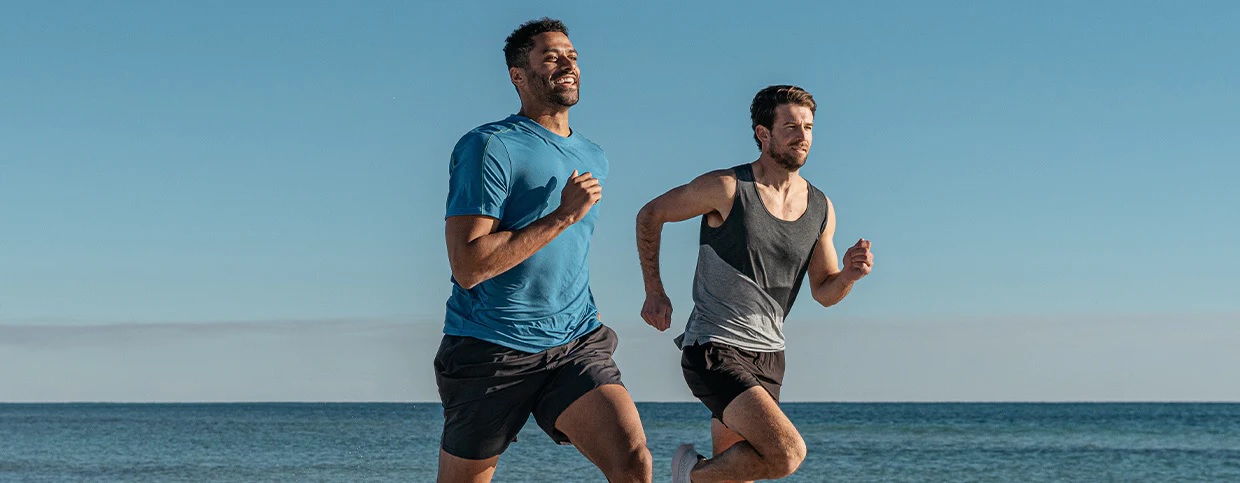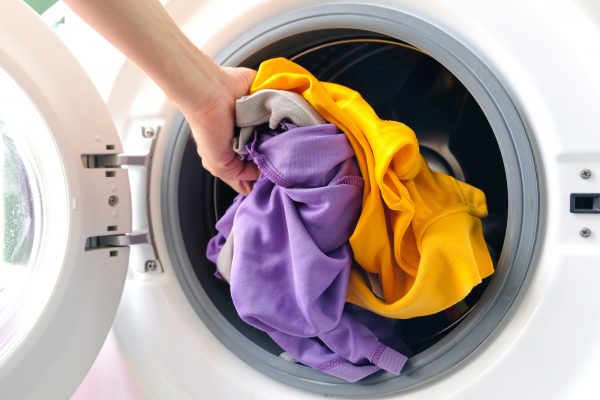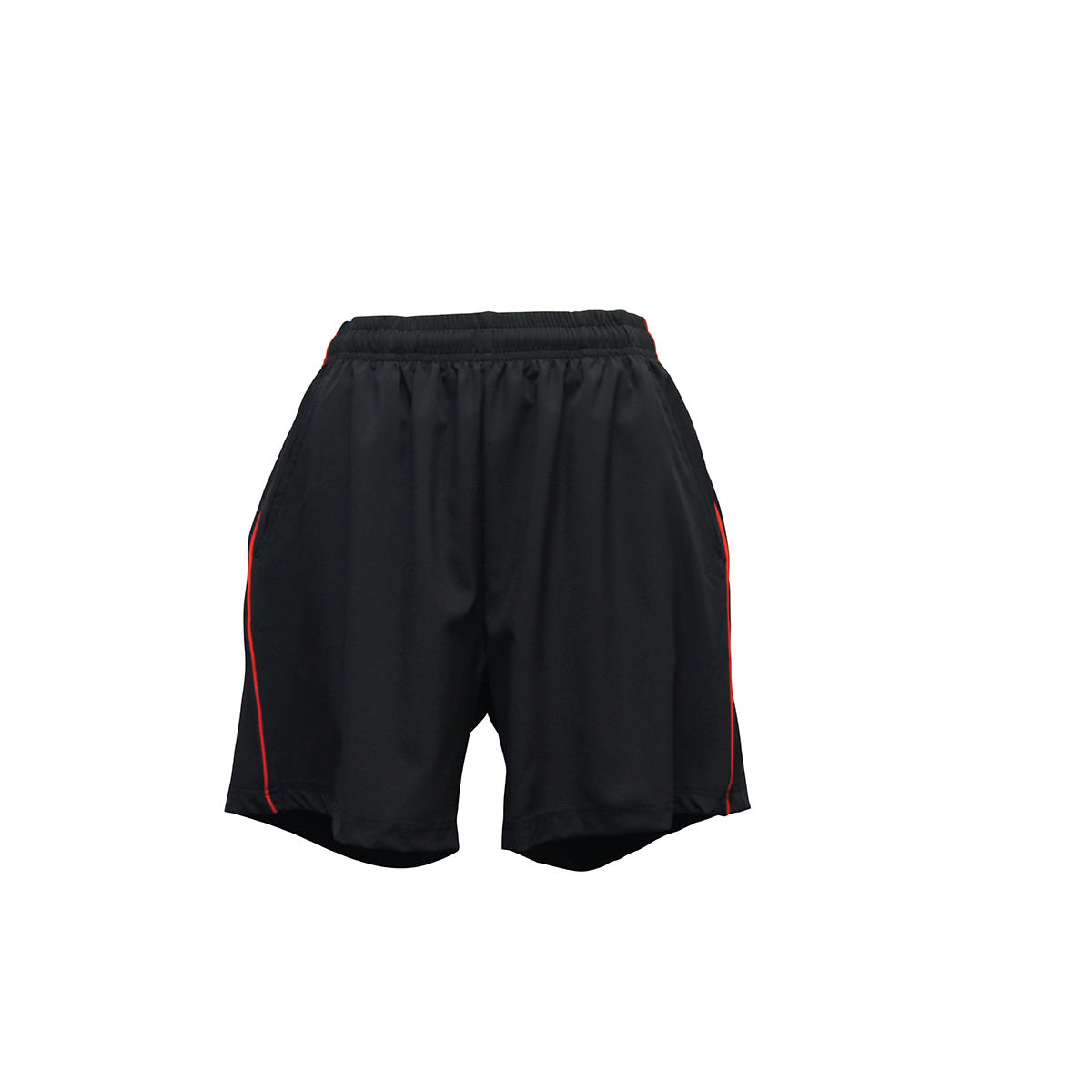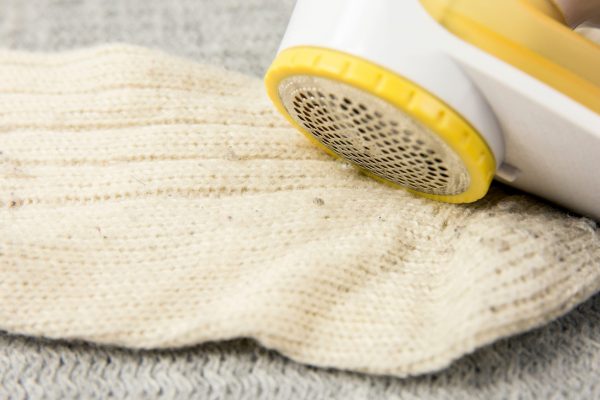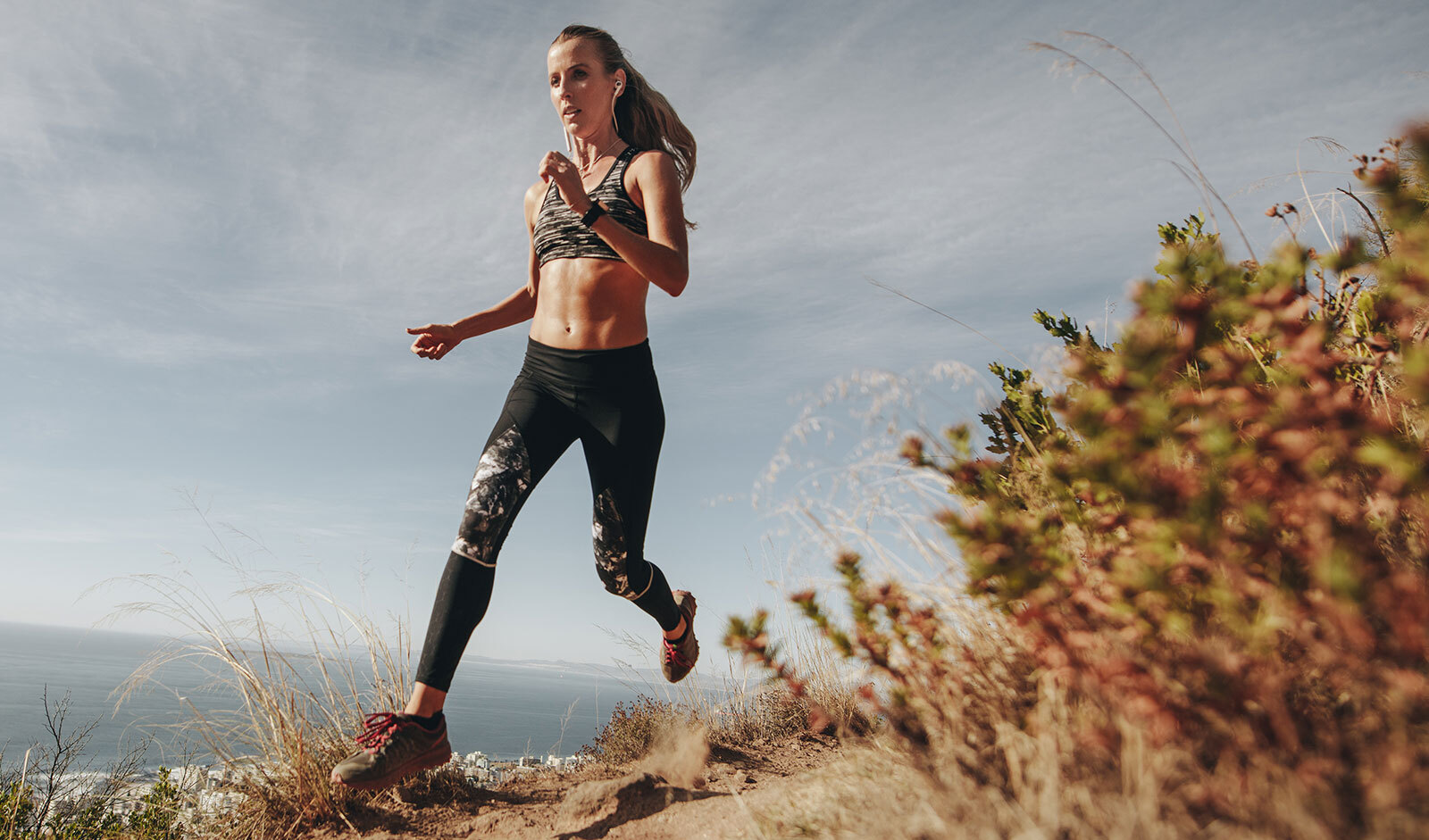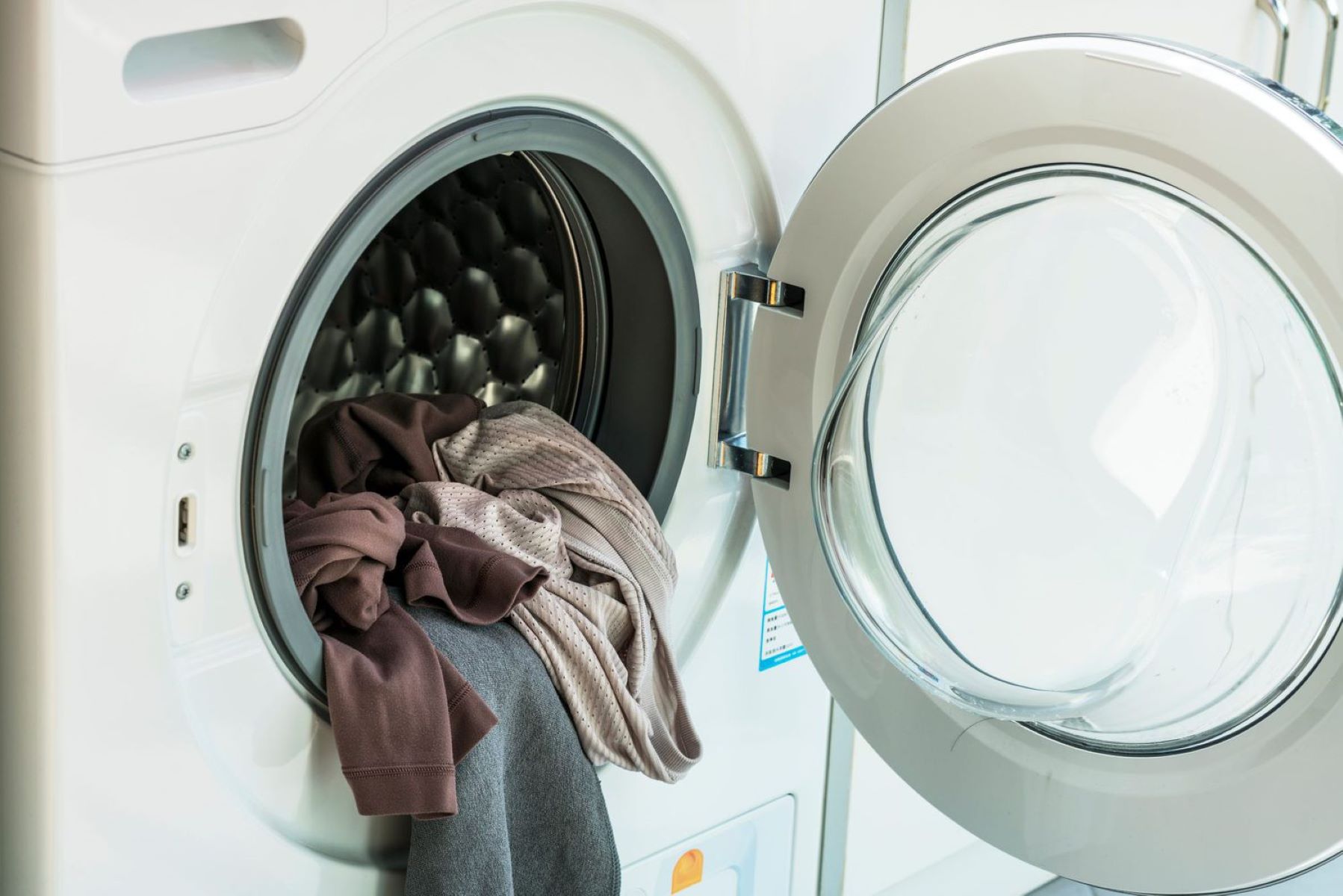

Featured
How To Wash My Workout Clothes
Modified: January 2, 2024
Discover the best way to wash your workout clothes with our featured guide. Keep your gear fresh, clean, and smelling great for your next sweat session.
Introduction
When it comes to maintaining the longevity and performance of your workout clothes, proper washing techniques are key. Whether you’re a gym enthusiast, a yoga lover, or an avid runner, your workout clothes can accumulate dirt, sweat, and odor that require special care to keep them fresh and functional.
Understanding the importance of properly washing your workout clothes is essential for ensuring they remain in top condition. Improper washing techniques can not only diminish the effectiveness of the fabric but can also contribute to bacteria growth and stubborn odors.
Fortunately, with a few simple steps, you can ensure that your workout clothes are fresh, clean, and ready to go for your next sweat session. In this article, we’ll explore the best practices for washing workout clothes, from preparing your garments for washing to choosing the right detergents and washing machine settings.
So, whether you’re a seasoned gym-goer or just starting to incorporate exercise into your daily routine, let’s dive into the world of properly washing your workout clothes to maintain their performance and extend their lifespan.
Understanding the Importance of Properly Washing Workout Clothes
Properly washing your workout clothes goes beyond simply removing dirt and sweat. It plays a crucial role in maintaining the fabric’s integrity, reducing unpleasant odors, and preserving the overall performance of your activewear. Let’s take a closer look at why proper washing techniques for workout clothes are so important.
Preserving Fabric Performance: Workout clothes are typically made from specialized materials designed to wick away moisture, provide flexibility, and enhance breathability. However, these fabrics can lose their performance qualities if not cared for properly. Improper washing, such as using harsh detergents or high heat settings, can damage the fibers, causing them to break down and reduce the garment’s effectiveness.
Preventing Bacterial Growth: During intense workouts, sweat, dead skin cells, and other dirt particles can accumulate on our clothing. If not washed properly, these substances can create a breeding ground for bacteria, leading to unpleasant odors and potential skin irritations. By utilizing proper washing techniques, you can significantly reduce the presence of bacteria and keep your workout clothes fresh and hygienic.
Removing Stubborn Odors: Workout clothes often retain strong and persistent odors due to their exposure to sweat and bacteria. Conventional washing techniques may not be enough to completely eliminate these odors. However, specific washing practices, such as using baking soda, vinegar, or specialized odor-eliminating detergents, can effectively combat and remove stubborn smells, ensuring your activewear smells fresh and clean.
Extending Lifespan: Workout clothes can be quite an investment, especially when it comes to high-quality activewear brands. By practicing proper washing methods, you can prolong the lifespan of your workout clothes, saving you money in the long run. Properly caring for the fabric, avoiding excessive wear and tear, and preventing damage caused by improper washing techniques will allow you to enjoy your favorite workout gear for an extended period.
Overall Hygiene: Maintaining proper hygiene is crucial, especially when it comes to items that come into close contact with our bodies, like workout clothes. Washing your activewear after every use helps to eliminate sweat, bacteria, and dirt that can contribute to skin irritations or infections. It ensures you have a clean and comfortable workout experience while promoting good personal hygiene practices.
Enhancing Comfort: Clean workout clothes not only promote physical hygiene but also offer enhanced comfort during your workouts. Removing dirt, oils, and sweat residues from the fabric prevents them from causing irritation or discomfort against your skin. By washing your workout clothes properly, you can feel fresh, confident, and comfortable throughout your exercise routine.
Now that we understand the importance of properly washing workout clothes, let’s delve into the practical steps you can take to ensure your activewear remains in top condition and ready for your next workout session.
Preparing Your Workout Clothes for Washing
Before diving into the washing process, it’s essential to prepare your workout clothes properly. Taking a few extra steps before tossing them into the washing machine can help maximize their cleanliness and longevity. Here are some key points to consider when preparing your workout clothes for washing:
1. Read the Care Instructions: Start by checking the care label on each garment. Different fabrics have specific washing instructions that may vary in water temperature, detergent type, and drying method. It’s crucial to follow these guidelines to avoid damaging the fabric or compromising its performance.
2. Turn Clothes Inside Out: Turning your workout clothes inside out before washing can help protect the fabric’s color and texture. This step also helps to expose the interior of the garments to the detergent, ensuring a more thorough cleaning.
3. Pretreat Stains: Are there any visible stains on your workout clothes? If so, it’s best to pretreat them before washing. Use a stain remover or a mixture of water and mild detergent to gently rub the affected area. Allow the pretreatment solution to work for a few minutes before moving on to the washing process.
4. Shake Off Excess Dirt and Debris: Give your workout clothes a quick shake or gentle brush-off to remove any loose dirt, dust, or debris. This step helps prevent these particles from spreading and potentially clogging your washing machine or causing damage during the washing process.
5. Secure Zippers and Fastenings: Before washing, ensure that all zippers, buttons, and hooks are securely fastened. This step prevents them from snagging on other garments or causing damage to the fabric during the wash cycle.
6. Remove Accessories: Take off any removable accessories like belts, straps, or padding from your workout clothes. These accessories may have specific washing instructions that differ from the main garment. Wash them separately or clean them according to the manufacturer’s recommendations.
7. Separate Delicate and Non-Delicate Fabrics: If you have a mix of delicate and non-delicate fabrics in your workout clothes, it’s best to separate them before washing. Delicate fabrics may require more gentle treatment to avoid damage, so it’s essential to wash them separately or use a garment bag for protection.
By following these preparatory steps, you can ensure that your workout clothes are ready for a thorough and effective washing process. Next, let’s dive into the sorting of your workout clothes, which is an important step to consider for optimal cleaning and care.
Sorting Your Workout Clothes
Properly sorting your workout clothes before washing is essential for maintaining their quality and cleanliness. By separating them based on fabric type, color, and level of dirtiness, you can ensure that each garment receives the appropriate treatment during the washing process. Here are some important factors to consider when sorting your workout clothes:
1. Fabric Type: Different workout clothes are made from various fabrics, such as polyester, spandex, cotton, or nylon. Sorting your clothes based on fabric type helps prevent damage caused by friction or incompatible washing methods. Delicate fabrics like spandex or specialty performance materials may require extra care, such as washing them on a gentle or delicate cycle.
2. Color: Sorting your workout clothes by color can help prevent color bleeding or fading. Dark-colored garments, like black or navy, should be washed separately or with similar dark-colored items to avoid color transfer onto lighter fabrics. Separating your clothes by color also ensures that bright-colored items maintain their vibrancy.
3. Level of Dirtiness: Consider the level of dirtiness or odor of each garment when sorting. If some items are heavily soiled or have strong odors, it’s best to wash them separately or with like items to prevent cross-contamination. Sorting based on dirtiness allows for targeted treatment and ensures that heavily soiled clothes receive a thorough cleaning.
4. Use Mesh Laundry Bags: Using mesh laundry bags is a great way to keep delicate items protected during the washing process. Place delicate workout clothes, such as sports bras or compression garments, in separate mesh bags to prevent them from snagging or stretching. Mesh bags also help to contain smaller items, like socks or activewear accessories, so they don’t get lost in the wash.
5. Separate Towels and Gym Accessories: It’s important to separate your workout clothes from towels or other gym accessories. Towels tend to produce a lot of lint, which can cling to your activewear and affect performance. Washing towels and workout clothes separately helps maintain the quality of both items and prevents lint transfer.
6. Follow Manufacturer Guidelines: Always refer to the care labels on your workout clothes for any specific sorting instructions provided by the manufacturer. They may include additional recommendations for sorting based on certain factors or special considerations for particular fabrics.
By taking the time to sort your workout clothes before washing, you can ensure that each garment receives the appropriate care and treatment it needs. This not only helps maintain their quality but also contributes to a more effective and efficient washing process. Now that your clothes are sorted, let’s explore the best detergent and washing machine settings for cleaning your workout gear.
Washing Workout Clothes: Fabric and Detergent Considerations
When it comes to washing workout clothes, considering the fabric type and choosing the right detergent are crucial for achieving optimal results. Different fabrics require specific care to maintain their performance and integrity. Here are some important fabric and detergent considerations when washing workout clothes:
1. Fabric Type: Start by taking into account the fabric of your workout clothes. Most activewear is made from synthetic materials like polyester, spandex, or nylon. These fabrics are lightweight, moisture-wicking, and quick-drying. However, they can be sensitive to certain washing techniques. It’s advisable to use a gentle cycle and avoid harsh agitation to prevent damage to the fabric’s elasticity and structure.
2. Odor Control: Workout clothes can develop stubborn odors due to sweat and bacteria buildup. To effectively remove unpleasant smells, consider using detergents with odor-absorbing properties. Look for detergents that specifically mention odor control or sportswear cleaning on the label. These detergents are formulated to target the bacteria that cause odor, leaving your workout clothes fresh and odor-free.
3. Avoid Harsh Detergents: Harsh detergents can be too aggressive for delicate workout fabrics, causing them to deteriorate over time. Opt for mild, pH-neutral detergents that are designed for sensitive fabrics. These detergents are gentle on the fibers while effectively removing sweat, dirt, and odor. Avoid using bleach or fabric softener, as they can damage the fabric’s elasticity and reduce its moisture-wicking capabilities.
4. Pre-Soak for Stubborn Stains: If your workout clothes have stubborn stains, consider pre-soaking them before washing. Fill a basin or sink with warm water and add a small amount of mild detergent. Let the clothes soak for about 15-30 minutes to loosen the stains. Gently agitate the garments, then proceed with the regular washing process.
5. Use Cold Water: Cold water is generally recommended for washing workout clothes, as hot water can cause shrinkage and damage sensitive fabrics. Cold water helps to preserve the color and elasticity of the fabric while effectively removing sweat and dirt. If you’re concerned about killing bacteria, using an appropriate detergent with cold water should be sufficient in eliminating most of the bacteria present.
6. Choose the Right Washing Machine Cycle: Most washing machines offer various cycle settings designed for specific fabric types. Opt for the delicate or gentle cycle when washing workout clothes to minimize the risk of damaging the fabric. Additionally, selecting a shorter wash cycle can minimize rubbing and agitation, prolonging the lifespan of your activewear.
7. Avoid Overloading the Washing Machine: It’s crucial not to overload the washing machine when washing workout clothes. Overloading can prevent thorough cleaning and may increase friction between garments, leading to pilling or stretching. Follow the manufacturer’s guidelines for the maximum load capacity of your washing machine to ensure proper cleaning and care.
By considering the fabric type and choosing the appropriate detergent, you can effectively clean your workout clothes while preserving their performance and durability. Next, let’s explore the right washing machine settings to use and additional tips for washing workout clothes.
Using the Right Washing Machine Settings
When it comes to washing workout clothes, selecting the right washing machine settings can make a significant difference in maintaining their quality and performance. Understanding which settings to use can help prevent damage, enhance cleanliness, and extend the lifespan of your activewear. Here are some key considerations for using the right washing machine settings:
1. Gentle or Delicate Cycle: For most workout clothes, it is recommended to use a gentle or delicate cycle. These cycles have slower agitation speeds and shorter washing times, minimizing the risk of fabric damage. The gentle setting is ideal for lightweight and sensitive fabrics, ensuring gentle cleaning without compromising the fabric’s integrity.
2. Cold Water Temperature: When it comes to washing workout clothes, using cold water is generally the best option. Cold water helps preserve the fabric’s color, prevent shrinkage, and maintain the elasticity of the garments. Additionally, cold water is often sufficient to remove sweat and dirt, especially when paired with an effective detergent.
3. Avoid Excessive Spin Cycles: High spin cycles can be rough on delicate workout fabrics, potentially causing stretching or snagging. Therefore, it’s advisable to choose a lower spin speed or opt for a wash cycle with reduced spin cycles. This precautionary measure helps protect the integrity of the fabric and keeps it in optimal condition.
4. Use a Shorter Cycle: Longer wash cycles can increase friction between garments and lead to unnecessary wear and tear. Selecting a shorter wash cycle helps minimize rubbing and agitation, which is particularly beneficial for workout clothes made from delicate or specialty fabrics. The shorter cycle can effectively clean the garments without subjecting them to prolonged exposure to water and mechanical action.
5. Avoid Fabric Softener: Fabric softeners can leave a residue on workout clothes, affecting their performance and moisture-wicking capabilities. It’s best to avoid using fabric softener altogether when washing activewear. If you desire a soft feel, opt for dryer balls or vinegar as a natural alternative to fabric softener.
6. Take Advantage of Specialized Features: Some washing machines have specialized features for cleaning sportswear or workout clothes. These settings typically offer gentle cleaning motion, reduced spin cycles, and shorter wash times. If your washing machine has these features, be sure to utilize them to maximize the effectiveness and care of your workout clothes.
7. Check the Manufacturer’s Guidelines: It’s always important to consult the manufacturer’s guidelines for washing machine settings specific to your workout clothes. These guidelines may provide recommendations on temperature, cycle type, or other customization options based on the fabric and construction of your activewear.
By using the right washing machine settings, you can effectively clean your workout clothes while preserving their quality and performance. However, there are additional tips and considerations for getting the best results, which we’ll explore in the next section.
Additional Tips for Washing Workout Clothes
While using the right washing techniques and settings is essential, there are additional tips and considerations that can further enhance the effectiveness and care of your workout clothes. These tips can help you maintain the freshness, performance, and longevity of your activewear. Here are some valuable additional tips for washing workout clothes:
1. Wash Immediately: Whenever possible, wash your workout clothes as soon as you can after wearing them. Leaving sweaty or soiled clothes sitting for an extended period can lead to the development of stubborn odors and bacteria growth. Prompt washing helps prevent these issues and ensures your clothes stay fresh.
2. Use Odor-Neutralizing Additives: To combat persistent odors, consider adding natural odor-neutralizing substances to the wash cycle. Baking soda, vinegar, or specialized odor-eliminating laundry boosters can be effective in removing and preventing odors from clinging to your workout clothes.
3. Separate Heavily Soiled Items: If you have heavily soiled workout clothes or those with excessive sweat stains, it’s a good practice to wash them separately or with like items. This helps prevent the dirt or stains from transferring to other garments and ensures more targeted cleaning for those specific items.
4. Avoid Overusing Detergent: Using too much detergent can leave residue on your workout clothes, affecting their performance and breathability. Follow the manufacturer’s recommendations for the appropriate amount of detergent to use. In most cases, using the recommended amount or slightly less is sufficient for a thorough cleaning.
5. Hang Dry in the Sun: Whenever possible, let your workout clothes air dry in direct sunlight. The sun’s UV rays have natural antibacterial properties that can help eliminate odors and bacteria. Additionally, air drying helps preserve the elasticity and shape of the fabric, prolonging the lifespan of your activewear.
6. Avoid Using Dryers: While it’s tempting to use a dryer for convenience, it’s generally advisable to avoid machine drying your workout clothes. The heat and tumbling action of the dryer can damage the fabric, especially with sensitive or specialty materials. If you must use a dryer, select the lowest heat setting or use a designated sports garment bag to protect your clothes during the drying process.
7. Follow Garment-Specific Guidelines: Some workout clothes may have specific care instructions provided by the manufacturer. These guidelines may offer additional tips or precautions tailored to the specific fabric or design of the garment. Always refer to these guidelines for the best care practices to maintain the quality and longevity of your workout clothes.
By following these additional tips, you can enhance the cleanliness, freshness, and durability of your workout clothes. Cleaning your activewear with care ensures that you can continue to enjoy your exercise routine with confidence and comfort, knowing that your workout clothes are in their best condition.
Drying Workout Clothes: Air Drying vs. Machine Drying
After washing your workout clothes, the next step is to properly dry them. The drying process plays a crucial role in maintaining the quality, shape, and performance of your activewear. While both air drying and machine drying are commonly used methods, each has its advantages and considerations. Let’s explore the pros and cons of air drying and machine drying workout clothes:
Air Drying:
Air drying, also known as line drying or natural drying, involves allowing your workout clothes to dry naturally without the use of a machine. Here are the benefits and considerations of air drying:
Benefits:
- Preserves fabric integrity: Air drying helps retain the fabric’s elasticity, shape, and overall integrity. The natural drying process minimizes the risk of heat damage that can occur with machine drying.
- Energy-efficient: Air drying is an environmentally friendly option as it avoids the energy consumption associated with using a dryer.
- Antibacterial properties: Sunlight is known to have natural antibacterial properties, helping to eliminate lingering odors and bacteria from your workout clothes.
- Cost-effective: With air drying, you don’t need to invest in a drying machine, saving on electricity costs and potential dryer maintenance expenses.
Considerations:
- Longer drying time: Air drying typically takes longer compared to machine drying. It requires sufficient time for the clothes to fully dry, which can be influenced by factors such as humidity and air circulation.
- Weather dependence: Air drying is weather-dependent, meaning it may not be suitable during periods of rain, high humidity, or extreme cold.
- Space requirement: To air dry your clothes, you need adequate space, such as a clothesline or drying rack, to hang each garment individually, allowing for proper airflow.
- Potential stiffness: Some fabrics, particularly those made with synthetic materials, may feel slightly stiff after air drying. However, this stiffness often dissipates once the clothes are worn or through light stretching.
Machine Drying:
Machine drying involves using a dryer to speed up the drying process. While convenient, there are certain considerations to keep in mind when machine drying workout clothes:
Benefits:
- Quick drying: Machine drying significantly reduces the drying time compared to air drying, allowing you to have your workout clothes ready to wear sooner.
- Softens fabrics: The tumbling action in the dryer can help soften fabrics, making them more comfortable to wear, especially for fabrics that tend to feel stiff after washing.
- Convenient: Machine drying is convenient and requires minimal effort. You simply load your clothes into the dryer, set the proper heat and time settings, and let the machine do the work.
Considerations:
- Potential fabric damage: The heat from the dryer can be harsh on certain workout fabrics, causing shrinkage, fading, or damage to delicate materials. Using high heat settings should be avoided for sensitive fabrics.
- Potential color fading: Vibrant or dark-colored workout clothes may experience some color fading over time when machine dried. To minimize this, turn the clothes inside out before machine drying.
- Increased wear and tear: The tumbling action of a dryer can lead to increased wear and tear on the fabric, resulting in pilling or reduced fabric longevity.
- Energy consumption: Using a dryer consumes electricity, which can have an impact on your energy bill and environmental footprint.
Ultimately, the decision to air dry or machine dry your workout clothes depends on your personal preferences, available space, and fabric considerations. If possible, a combination of both methods can be used. For example, air drying most of your clothes and using a dryer for specific items or convenience when time is limited. Whichever method you choose, proper drying techniques are essential for maintaining the quality of your activewear.
Storing and Organizing Clean Workout Clothes
Properly storing and organizing your clean workout clothes is just as important as washing and drying them. It ensures that your activewear remains in good condition, ready for your next workout session. Here are some helpful tips for storing and organizing your clean workout clothes:
1. Fold or Hang: Decide whether to fold or hang your workout clothes based on their fabric and your available storage space. Generally, lightweight and stretchy fabrics like leggings and t-shirts can be folded and stacked neatly in drawers or baskets. Heavier or more structured items like jackets or hoodies may benefit from being hung to maintain their shape.
2. Separate by Type: Categorize your workout clothes by type (e.g., tops, bottoms, sports bras) to make it easier to locate specific items. This organization system allows for quick, hassle-free outfit selection when you’re getting ready for your workout.
3. Color Code: If you have a large collection of workout clothes, consider color coding them to further streamline your organization. Arrange garments within each category by color, making it easier to find specific items and creating a visually appealing display.
4. Utilize Drawer Dividers or Storage Bins: Invest in drawer dividers or storage bins to keep your folded items organized within your drawers or on shelves. These dividers and bins create designated compartments for each type of clothing, preventing them from becoming jumbled or mixed up.
5. Keep Active Accessories Together: Designate a specific area to store your workout accessories, such as resistance bands, yoga mats, or fitness trackers. This ensures that everything you need for your workout is easily accessible and reduces the chances of misplacing or losing any items.
6. Rotate Your Selection: To ensure even wear and prevent certain items from being neglected, rotate your selection of workout clothes. This practice allows you to distribute the usage across your activewear collection, helping to extend the lifespan of each item.
7. Store in a Clean, Dry, and Well-Ventilated Area: Choose a storage area for your workout clothes that is clean, dry, and well-ventilated. Avoid storing them in damp or humid spaces, as this can lead to mold or mildew growth. Additionally, make sure the storage area is free of any strong odors that could transfer onto your clean clothes.
8. Avoid Permanent Creases: To prevent permanent creases from forming in folded clothes, periodically change the folding pattern. This practice prevents excessive pressure being placed on specific areas, which can result in hard-to-remove creases.
9. Don’t Overstuff Storage Spaces: Avoid overcrowding your storage spaces to prevent unnecessary wrinkles, stretching, or damage to your workout clothes. Giving each item enough breathing room helps maintain their shape and condition.
10. Regularly Inspect and Discard: Regularly review the condition of your workout clothes and discard any items that are beyond repair or have lost their performance qualities. This decluttering process ensures that you’re only keeping activewear that is in good condition and suited for your workouts.
By following these tips, you can effectively store and organize your clean workout clothes, making them easily accessible and keeping them in good condition for future use. Remember, maintaining a well-organized activewear collection not only enhances the functionality of your workouts but also brings a greater sense of order and ease to your fitness routine.
Conclusion
Properly washing and caring for your workout clothes is essential for maintaining their performance, freshness, and longevity. By following the guidelines and tips outlined in this article, you can effectively clean, dry, and store your workout clothes, ensuring they remain in optimal condition for your fitness activities. Here are some key takeaways to remember:
Firstly, understanding the importance of properly washing workout clothes sets the foundation for effective cleaning. By recognizing the role of proper hygiene, odor control, and prolonging fabric performance, you can prioritize the care your activewear deserves.
Preparing your workout clothes for washing is the initial step in the process. By reading care labels, turning garments inside out, and pretreating stains, you can ensure that your workout clothes are ready for a thorough cleaning.
Sorting your workout clothes based on fabric type, color, and level of dirtiness helps ensure a targeted and effective washing process. This prevents damage, color transfer, and ensures that heavily soiled items receive the attention they need.
Considering fabric and detergent considerations, such as using gentle detergents and cold water, helps preserve the integrity of the fabric and prevent damage. Following manufacturer guidelines and using specialized features on your washing machine can further enhance the cleaning process.
Choosing between air drying and machine drying depends on your personal preferences, fabric type, and lifestyle. Air drying is gentle, cost-effective, and energy-efficient, while machine drying offers convenience and quick drying times. Finding a balance between the two can maximize the benefits for your workout clothes.
Finally, properly storing and organizing your clean workout clothes ensures their longevity and ease of use. By folding or hanging them, separating by type and color, and utilizing storage solutions, you can easily locate and care for your activewear.
By implementing these practices into your routine, you can maintain the freshness, functionality, and performance of your workout clothes. Whether you’re hitting the gym, going for a run, or practicing yoga, having clean and well-cared-for activewear adds to the overall enjoyment of your fitness endeavors.

